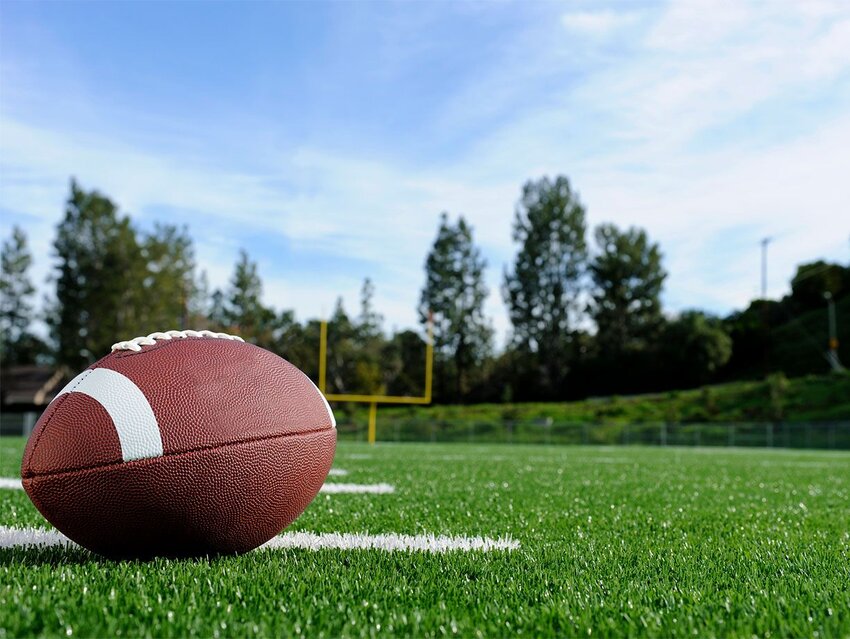From hometown college and high school games to the National Football League's Super Bowl, football is arguably the most popular sport in the United States. And like most other sports, it comes with its own jargon. These terms help us describe, celebrate, and better understand the game. We’ve gathered some of the quirkiest, most surprising, and most popular football terms in this list of need-to-know gridiron lingo to get you ready for the next big game.
Super Bowl
America’s biggest sports event of the year is likely named after a child’s toy. In the 1960s, many terms were thrown around to describe the first national football championship. “The Big One” and “Pro Bowl” were just a few of the rejected options. Kansas City Chiefs owner Lamar Hunt was reportedly the first to suggest calling it the “Super Bowl,” referencing his son’s “Super Ball” toy. The first AFL-NFL Championship Game took place on January 15, 1967, but it wouldn’t be known as Super Bowl I until the name was officially adopted in 1970.
Hail Mary
A Hail Mary — the name of a play as dramatic as it sounds — is a long forward pass thrown by the quarterback in a last-minute attempt to score. Its probability of success is low, but it's nonetheless exciting, especially for anxious fans in the stands. The first-recorded use of the term was in 1922 by players at the University of Notre Dame, a Roman Catholic school. The team said a “Hail Mary” prayer during their huddle before making their way to a game-winning touchdown. The term stuck around and was popularized by Heisman winner Roger Staubach when he described a 1963 touchdown as a “Hail Mary play.” He continued to use the term during his NFL career with the Dallas Cowboys.
Line of Scrimmage
This imaginary line, which touches the nose of the football at the start of each down, runs parallel to the goal lines, It became known as the “line of scrimmage” thanks to another popular contact sport, rugby. In rugby, a “scrum” or “scrummage” is a method of restarting a play during the game. This is similar to the static line of scrimmage that was established at Yale in the 1880s thanks to senior player Walter Camp. The etymology of football’s “scrimmage” and rugby’s “scrummage” dates back to 1857, when the term originally meant “a confused struggle between players.”
Sack
Deacon Jones was a star defensive end in the 1960s and ‘70s, playing for the Rams, Chargers, and Redskins (now known simply as the Washington Football Team). Aside from his impressive record and Football Hall of Fame induction, he also gave the NFL an important term: “sack.” When asked about the term, Jones explained that “sacking a quarterback” is similar to what used to happen when a city was “sacked” — it was plundered and destroyed. He felt that this term best described the move of tackling the quarterback while they have the ball behind the line of scrimmage.
Blitz
Blitzing is a tactic used by the defense in American football to disrupt any passing attempts by the offense. In this play, five or more defensive players will rush the opposing quarterback, typically in an attempt to “sack” them. The term was first coined around 1960 by Chuck Drulis, the defensive coordinator for the St. Louis Cardinals, in plays such as the “wildcat blitz” and “safety blitz.” The word “blitz” itself comes from the word “blitzkrieg,” a German term meaning “rapid attack” — a rather fitting definition for the play.
Coffin Corner
A coffin corner is the corner of the playing field just before the end zone, between the five-yard line and the goal line. A “coffin corner kick” ideally goes out of bounds just before the front of the end zone (before the orange pylon). Surprisingly, this football term comes from architecture. The small niches cut into staircase landings of Victorian homes are often called coffin corners. The popular myth is that these corners were cut into the walls to make carrying a casket down the stairs easier, but that has been debunked — they were merely decorative.
Gridiron
During the early years of American football, the game was still making a name for itself. To distinguish the new sport from similar sports, such as rugby and association football (soccer), it was dubbed “gridiron football” for the parallel lines on the rectangular field. The term “gridiron” itself has been around for centuries, used to describe the metal screen for cooking over a fire. The American football field’s similar pattern to a gridiron earned it this nickname.
Pigskin
Professional and college footballs are now made from cowhide leather, yet they’re still nicknamed “pigskins.” For a time, there was speculation that the earliest footballs were actually made of pigskin, but that has been discredited. More likely, early footballs were probably made from pigs' bladders (and possibly the bladders of other animals) to help inflate the interior of the ball. Fortunately, animal bladders are no longer used to create modern footballs.
Featured image credit: Matt_Brown/ iStock

